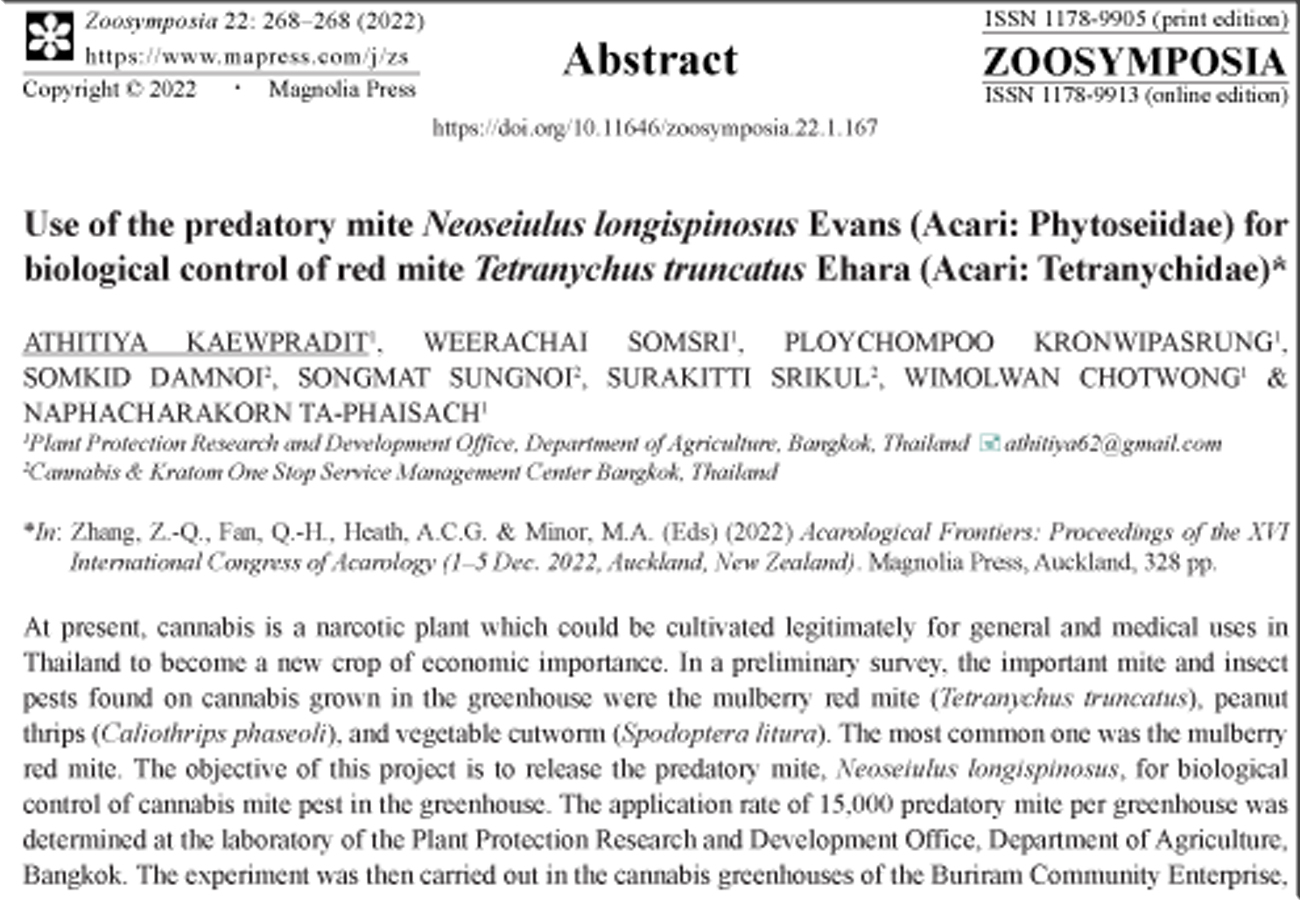Abstract
At present, cannabis is a narcotic plant which could be cultivated legitimately for general and medical uses in Thailand to become a new crop of economic importance. In a preliminary survey, the important mite and insect pests found on cannabis grown in the greenhouse were the mulberry red mite (Tetranychus truncatus), peanut thrips (Caliothrips phaseoli), and vegetable cutworm (Spodoptera litura). The most common one was the mulberry red mite. The objective of this project is to release the predatory mite, Neoseiulus longispinosus, for biological control of cannabis mite pest in the greenhouse. The application rate of 15,000 predatory mite per greenhouse was determined at the laboratory of the Plant Protection Research and Development Office, Department of Agriculture, Bangkok. The experiment was then carried out in the cannabis greenhouses of the Buriram Community Enterprise, Buriram, from October 2021 to January 2022 during the flowering period of two months. The comparison was Treatment 1 (No release of the predatory mites), and Treatment 2 (Release of the predatory mites, weekly for eight times), with 20 replications of each treatment. They were carried out in the greenhouses where the three similar mite and insect pests were found. The results showed that the population of the mulberry red mite, T. truncatus, was much lower in the greenhouse with the release of predatory mites than the one with no release, yielding 55 and 44 kg of dried flower bud (marijuana) per greenhouse, respectively. The 25% increase in yield due to predatory mite releases indicates that N. longispinosus is a promising biocontrol agent for cannabis mite pest in the greenhouse.
References
-

